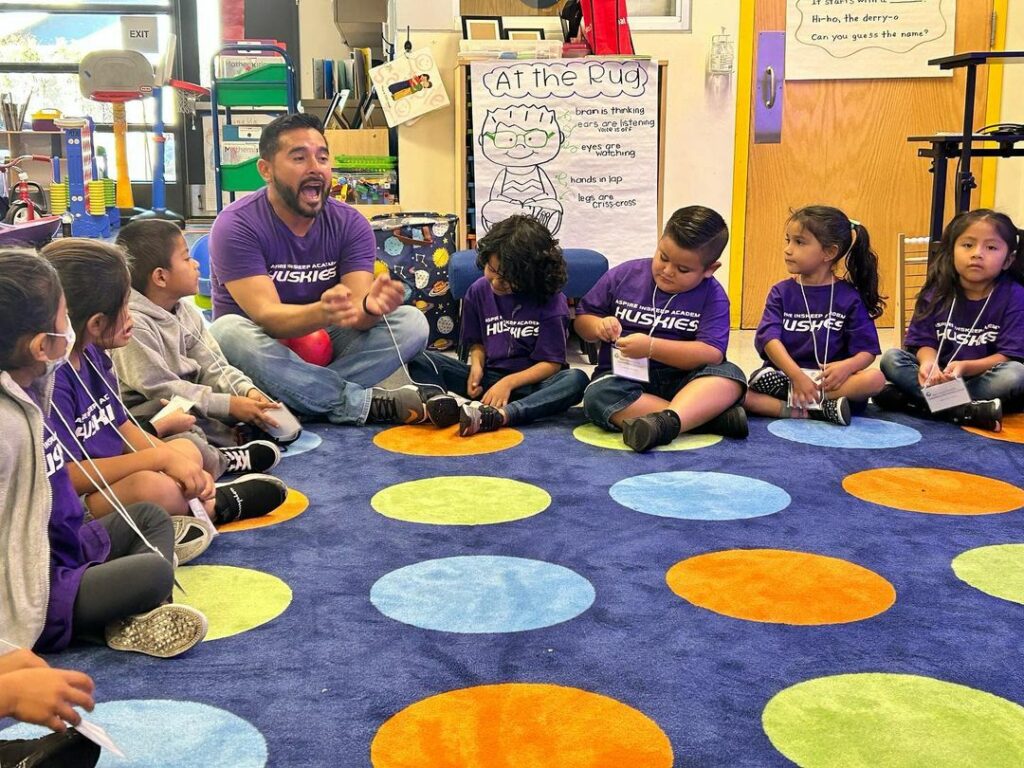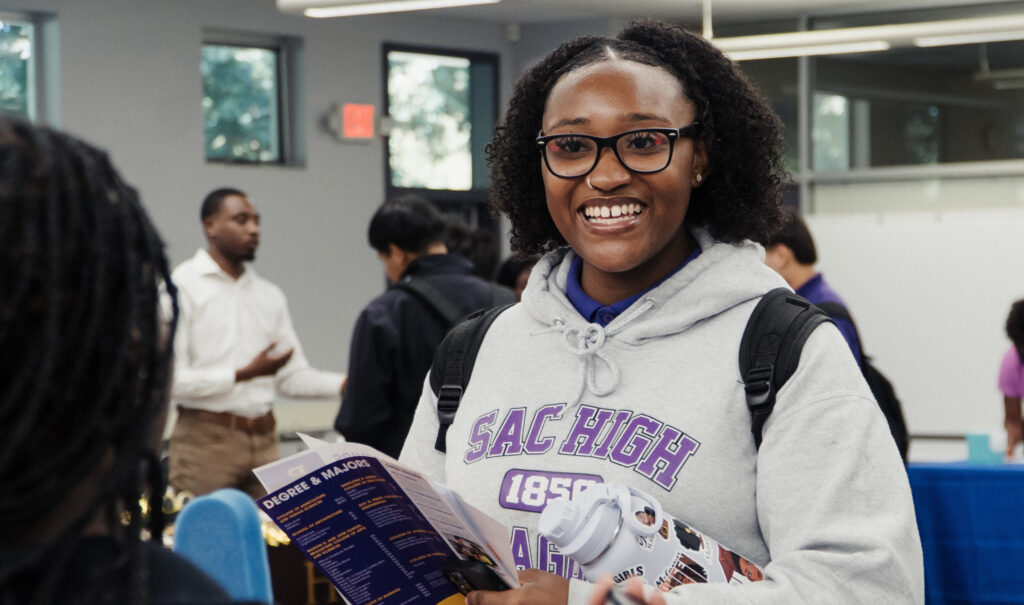
A teacher and students at Aspire Inskeep Academy in Los Angeles.
Courtesy: Aspire Public Schools
In times of crisis, we should be looking for ways to help, not hinder. But in California, the inequities in public school education funding are only deepening the crisis for too many students.
On top of the devastating social-emotional and academic effects of the pandemic, our communities have been dealing with widespread staffing challenges, culture wars and frequent unfair attacks on educators. And in cities across California, projections suggest that public school enrollment will continue to drop — creating a crisis for practically all schools across the state.
Public charter schools face all of these challenges and more. At Aspire Public Schools, a charter school network serving more than 15,000 students in 36 schools across the state, our student population is more than 85% Black and Latino, and the vast majority of our students are experiencing poverty. Yet since the day we were founded, we’ve been forced to get creative with limited resources: Aspire students — like all public charter school students in California — receive less funding than their peers in traditional public schools.
According to new research from the University of Arkansas, the problem remains severe. In the 2019-20 school year, Los Angeles public charter school students received $5,226 less per-pupil funding than their counterparts in traditional public schools. In Oakland, the gap is even larger, at $7,103. This is driven by a lack of public funding. In both cities, public charter schools receive less local, state and federal funding than their counterparts in traditional public schools.
Why? While both public charters and traditional public schools receive the same amount of base funding under California’s Local Control Funding Formula, or LCFF, that doesn’t mean the total funding is equal. One reason for this is that schools receive additional funding for higher-need student categories and for higher concentrations of students in those categories, known as “concentration grants.” However, charter school concentration grant amounts are capped based on the average student demographics for the district in which they reside. This means that public charters are, in effect, penalized for serving a greater share of high-need students than their district. There are also a number of local, state and federal funding streams that are only accessible to traditional public schools —for instance, voter-approved local funding for operations or capital projects.
I’m not writing this to complain. We are honored to serve our school communities and our wonderful, talented scholars. It’s hard work, but unequal funding makes it harder. The more time we have to spend fighting tooth and nail for basic resources, the less we can spend educating California’s next generation. Our scholars are the same students whom politicians claim to want to support, especially in the wake of the pandemic, but they are consistently left out because they and their families made the choice to attend a public charter school. Elected officials frequently speak about the importance of equity, and we at Aspire couldn’t agree more. But equity means all students getting what they need — and Aspire schools (as well as many other public charter schools) serve large numbers of historically marginalized students.
This challenge is nothing new. If you talk to charter leaders across California, they’ll all tell you a similar story. Due to this systemic funding deficit, we have had no choice but to try to raise philanthropic dollars to fill critical funding gaps. But that is often turned into an attack against us, with critics saying that public charter schools are bankrolled by private investors. That is simply untrue. Trust me — I would love nothing more than to be able to operate our schools without fundraising. But it’s just not an option.
And new challenges often emerge. Just two years ago we made the choice to go to Sacramento to advocate for all public charter students to fight against legislation that would have penalized charter schools — and not traditional public schools — for following the state’s guidelines for quarantining students who were exposed to Covid-19. While we were able to win that fight, it is illustrative of the larger issue: Charter students are treated as less than others.
But here’s the thing: Despite these challenges, charter schools have been able to accomplish so much. According to new research from the CREDO Institute at Stanford University, California charter students have gained the equivalent of 11 days of reading and four days of math compared with similar students in traditional public schools. Black and Latino students and students experiencing poverty had even larger gains. At Aspire specifically, we were proud to have met CREDO’s “gap-busting” criteria in both reading and math, recognizing our ability to reduce opportunity gaps at scale.
So many of our students are carrying so much. They are talented and resilient, and they work hard to achieve their goals. We believe in them, and we tell them that every day.
But this funding gap tells them something different — that because they happen to attend a charter school, they matter less. It’s time that education leaders put childish politics aside and focus on giving all of our kids what they need. They’re all California students. They deserve to be treated as such.
•••
Mala Batra is the chief executive officer at Aspire Public Schools, a charter management organization serving 15,000 TK-12 students across 36 schools in historically underserved communities throughout California.
The opinions expressed in this commentary represent those of the author. EdSource welcomes commentaries representing diverse points of view. If you would like to submit a commentary, please review our guidelines and contact us.






